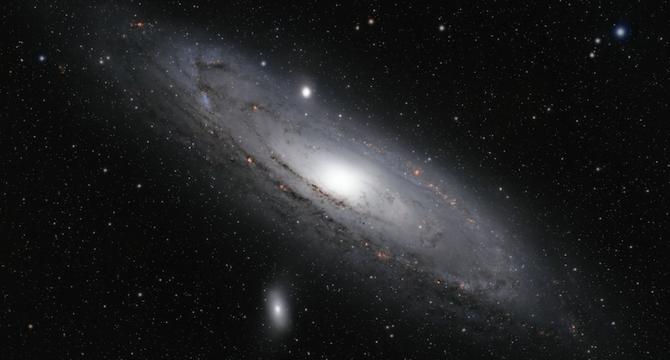Earthsky
1M
0

Image Credit: Earthsky
New map of Andromeda galaxy and its colossal ecosystem
- The Andromeda galaxy, our Milky Way's nearest neighbor, is a massive spiral galaxy with 36 known dwarf satellite galaxies.
- NASA's Hubble Space Telescope has created a new 3D map of the Andromeda galaxy and its satellite galaxies, offering insights into their evolution over 14 billion years.
- Research published in The Astrophysical Journal reveals that star formation in Andromeda's satellites has persisted longer than previously thought, posing a puzzle for astronomers.
- Andromeda's galactic ecosystem is asymmetrical and disrupted, likely due to a past merger with another galaxy.
- The Hubble observations suggest that Andromeda's evolution has been more dynamic compared to the Milky Way, with implications for small-galaxy growth.
- Astronomers plan more observations in five years to study the motions of Andromeda's dwarf satellites since their formation billions of years ago.
- Star formation in Andromeda's satellites, such as Messier 32, has continued for almost the entire age of the universe, which is puzzling to scientists.
- The satellite galaxies around Andromeda exhibit unusual orbital configurations, adding to the mysteries of their formation and evolution.
- Clues from the Hubble observations indicate diverse evolutionary paths for low-mass galaxies in Andromeda's ecosystem compared to the Milky Way satellites.
- The Hubble Space Telescope's new insights provide a comprehensive view of the Andromeda galaxy and its complex ecosystem, shedding light on its intriguing history.
Read Full Article
Like
For uninterrupted reading, download the app